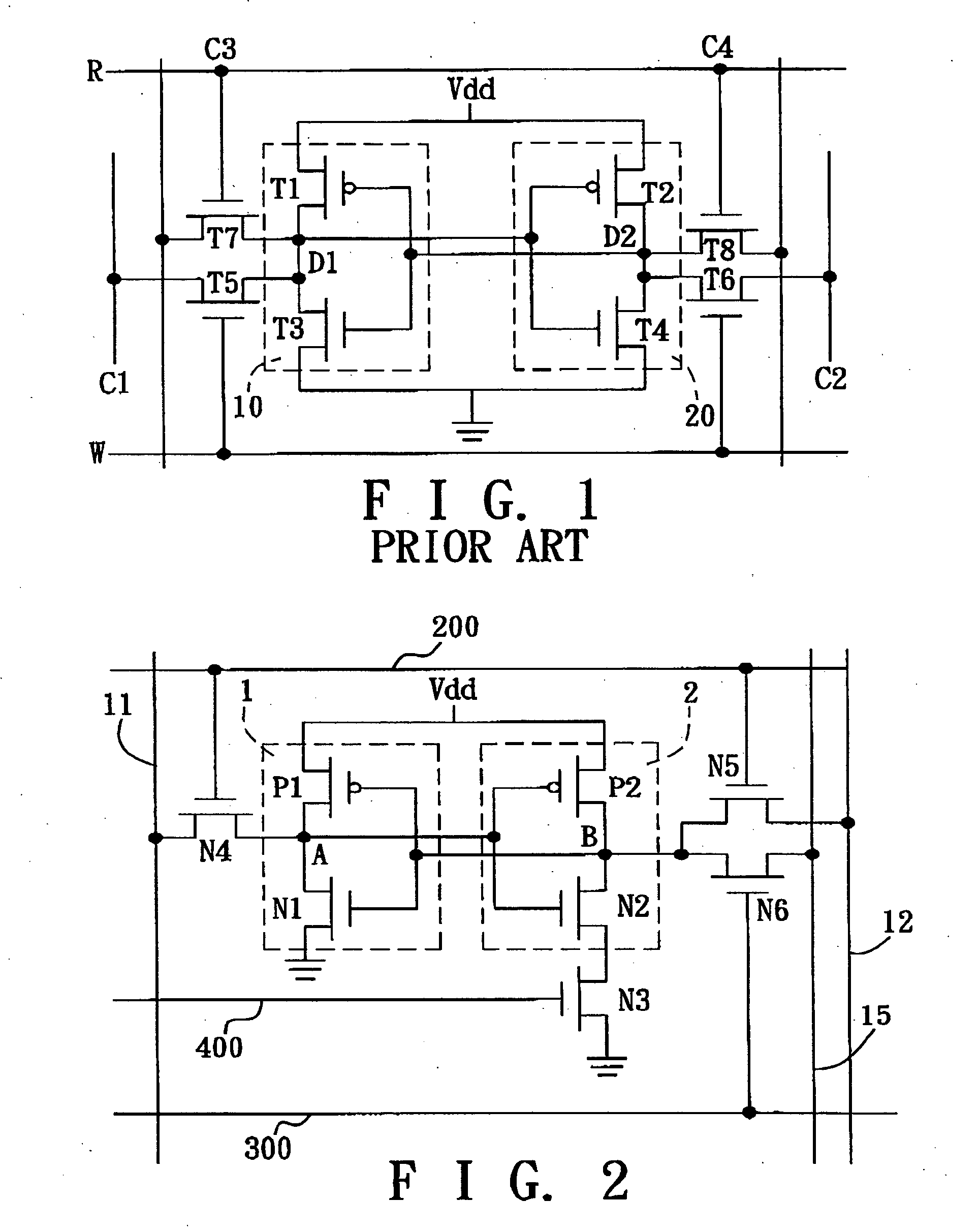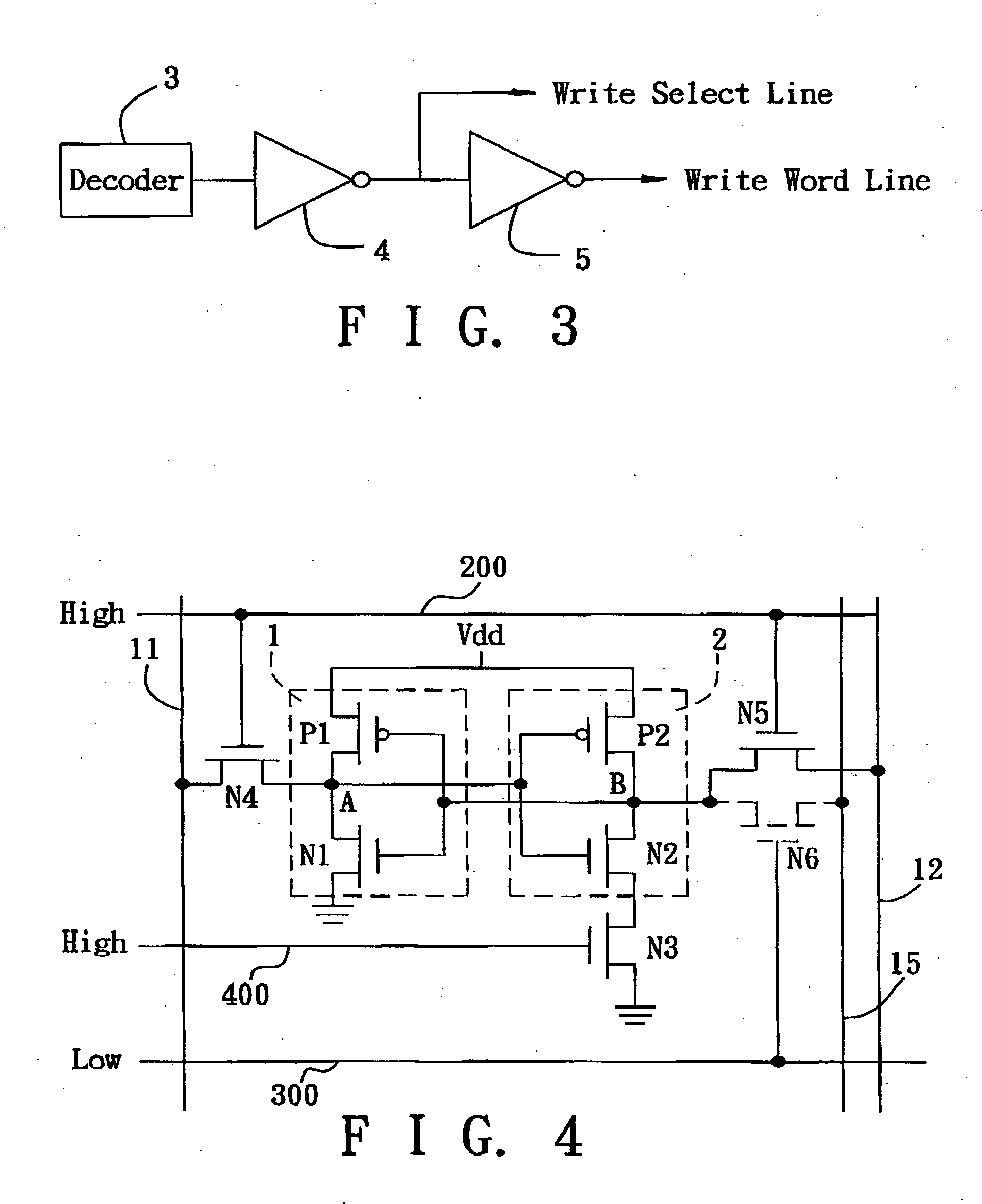Low-power SRAM memory cell
a memory cell, low-power technology, applied in the direction of information storage, static storage, digital storage, etc., can solve the problems of large power consumption, large power waste, instability of the memory cell, etc., and achieve the effect of consumption of a relatively small amount of power
- Summary
- Abstract
- Description
- Claims
- Application Information
AI Technical Summary
Benefits of technology
Problems solved by technology
Method used
Image
Examples
Embodiment Construction
[0047] Before the present invention is described in greater detail, it should be noted that like elements are denoted by the same reference numerals throughout the disclosure.
[0048] Referring to FIG. 2, the first preferred embodiment of a low-power SRAM memory cell according to this invention is shown to comprise a first inverter 1, a second inverter 2, a switching transistor (N3), two read access transistors (N4, N5), and a write access transistor (N6).
[0049] The first inverter 1 includes a pair of transistors (P1, N1) that are coupled in series. The second inverter 2 likewise includes a pair of transistors (P2, N2) that are coupled in series. The transistors (P1, P2) are PMOS field effect transistors, whereas the transistors (N1, N2) are NMOS field effect transistors. The first and second inverters 1, 2 are cross-coupled. That is, the transistors (P2, N2) of the second inverter 2 have gate terminals that are coupled to a common connection node (A) of the transistors (P1, N1) of ...
PUM
 Login to View More
Login to View More Abstract
Description
Claims
Application Information
 Login to View More
Login to View More - R&D
- Intellectual Property
- Life Sciences
- Materials
- Tech Scout
- Unparalleled Data Quality
- Higher Quality Content
- 60% Fewer Hallucinations
Browse by: Latest US Patents, China's latest patents, Technical Efficacy Thesaurus, Application Domain, Technology Topic, Popular Technical Reports.
© 2025 PatSnap. All rights reserved.Legal|Privacy policy|Modern Slavery Act Transparency Statement|Sitemap|About US| Contact US: help@patsnap.com



